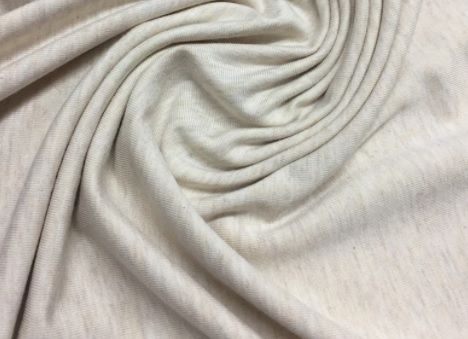Good Info For Deciding On Hemp Clothes
Wiki Article
Why Is Hemp Stronger, More Durable, And More Biodegradable Than Cotton?
Hemp is thought to be more biodegradable due to its natural properties and the method in which hemp grows. Here's why- Biodegradability-
Natural Fibers - Hemp, an organic fiber derived from plants, is biodegradable. The hemp textiles and clothes naturally break down when they are discarded. They return to nature, leaving no lasting residue. It's a stark contrast to synthetic fibers including polyester which can take many years to decompose.
Hemp fabrics are typically free of synthetic additives or treatments that inhibit biodegradability. They can be treated with synthetic chemical additives such as certain finishings or dyes that slow the biodegradation process.
Durability-
Hemp fibers have earned a reputation for their durability and strength. Hemp textiles and clothing are more resistant to wear than cotton, which helps make they last for longer. Hemp clothes are tough and washable more often before showing indications of wear.
Hemp fabrics are less prone to pilling than cotton. This contributes to their durability and high-quality.
Regenerative Agriculture-
Soil Health Hemp cultivation is regenerative when used sustainably. Hemp's deep roots help prevent erosion and soil compaction and improve soil health through aeration and enhanced microbial activity. This aspect of regeneration can improve the soil for future crop.
Low environmental impact. Sustainable hemp production methods are typically characterized by low use of pesticides and weedicides. This reduces environmental harm. The cultivation of cotton, which is based on synthetic chemicals, may cause soil degradation as well as water pollution.
Water Efficiency-
Low Water Requirements- Hemp generally requires less water than cotton for development. Its drought-resistant characteristics mean that it thrives even without irrigation, or even in conditions that are rain-fed. This makes it more efficient in water use especially in areas where water resources are limited.
Crop Rotation Hemp is a good choice to incorporate in crop rotation systems that can enhance overall soil health and lower the chance of soil loss and the buildup of disease. In cotton farming that is conventional the crop rotation process is less common.
Hemp has a great deal of versatility. It can be utilized to create a variety of products like paper, clothing as a building material, textiles. Hemp is grown in numerous ways that include renewable and sustainable.
While hemp offers these advantages but it's important to know that both hemp and cotton can be produced sustainably or not, based on farming practices and processing methods. The choice of hemp products made using eco-friendly and ethical methods will increase its environmental benefits. Similarly, selecting organic cotton products can reduce the environmental issues related to conventional cotton production. Check out the top rated a fantastic read on hemp clothing for more examples including organic hemp underwear, hemp pants, hemp tank top, hemp shorts patagonia, hemp pants mens, afends jesse dress, hemp shorts patagonia, hemp shirts mens, hemp clothing wholesale, hemp fabric clothing and more.

What Makes Hemp Clothing Technical And Functionally Superior To Traditional Fibres?
Hemp clothing provides several practical and technical advantages over traditional textiles. It's also environmentally sustainable. Here are a few ways which hemp clothing stands out as a high-performance and eco-friendly choice in terms of moisture wicking and breathability-
Hemp fibers are extremely water- and breathable, making hemp clothing very comfortable to wear in various conditions. They assist in wicking away moisture from your body, which helps keep you dry and cool in hot weather and reduce the risk of odors and bacterial growth.
Temperature Regulation
Hemp clothing has great thermoregulating properties. It is able to keep you warm in cold temperatures by keeping body heat close and help to keep cool in hot weather when heat and moisture can go away. The natural regulation of temperature can reduce the necessity to regularly change clothes.
Durability-
Hemp fibers can be durable. Hemp clothing tends to be more robust and resistant to wear and tear compared to the traditional fibers like cotton. This means that hemp clothing will last longer, which reduces the frequency of replacements, and consequently, environmental impact.
UV Protection
Hemp fibers shield the skin by blocking harmful UV radiations. This feature can be particularly beneficial for outdoor activities.
Biodegradability:
Hemp clothes are biodegradable. This means it degrades in a natural way as time passes. It's an excellent way to reduce textile waste and its impact on the environment.
Low Environmental Impact
Hemp cultivation usually requires less synthetic pesticides and herbicides in comparison to cotton grown conventionally. Hemp also uses less water making it an environmentally friendly alternative. The ecological benefits of hemp grown organically are even more pronounced.
Carbon Sequestration
Hemp can be utilized to capture CO2 from the atmosphere. The cultivation of hemp works as a carbon-sink, which helps to reduce the levels of greenhouse gases.
Sustainability and Crop Rotation
Hemp can be incorporated into the rotation of crops, enhancing overall soil health while reducing the risk of soil depletion and disease buildup. This sustainable farming practice helps to reduce its environmental impact.
Versatility:
Combining hemp fibers with other natural materials like organic cotton and recycled polyester is a way to make eco-friendly and high-performance fabric blends. This flexibility makes it possible to develop environmentally sustainable and innovative textiles.
Low Toxicity
Hemp is naturally low in harmful substances and does not require extensive processing with chemicals in its manufacturing, which reduces environmental impact.
In addition to hemp's many ecological and functional benefits, it's important to be aware that sustainability of clothes can also be affected by factors like dyeing techniques transport, ethical labour practices. If consumers want to make sustainable choices they should look for clothing brands that focus on sustainable manufacturing, transparency, and ethical practices. View the top hemp clothes info for website tips including 100 hemp t shirt, women's all seasons hemp canvas bomber hoody jacket, t shirt hemp, patagonia iron forge pants, hemp sweater, jungmaven t shirt, hemp shirts wholesale, hemp t shirts wholesale, hemp shorts patagonia, hemp fleece fabric and more.

What is the main difference between hemp fiber and bamboo fibre?
Both bamboo and hemp fibers are plant-based fibres that are used to produce textiles. Each one has its own unique properties and characteristics. Here are some of the major differences between bamboo and hemp fibre- 1. Plant Source-
Hemp fibers come from the bast fibers that are located in the stalks. Hemp is a multi-purpose and fast-growing plant that has been used for a variety of purposes for centuries.
Bamboo fibers are made of bamboo pulp. Bamboo is grass that grows rapidly and is known for its long-lasting qualities.
2. Fiber Characteristics-
Hemp- Hemp fibers are known for their strength and durability. They are among the strongest of all natural fibers. With each wash they soften up, which makes them perfect for textiles that last a long period of.
Bamboo It is a silky, soft fiber. Although they may not be as sturdy as hemp fibers and may be more fragile in some cases but their softness to the skin is highly valued.
3. Texture & Feel
Hemp fabric is a bit coarse and has a textured feeling. This is especially true when it is in its raw form. It's soft, but it has a different feel to bamboo.
Bamboo bamboo fabric is smooth, silky, and luxuriously soft. It has been described as a mixture of cotton and silk.
4. Breathability is crucial and so is moisture-wicking.
Hemp- Hemp fibers are naturally air-tight and moisture-wicking, which allows the circulation of air and absorption of moisture. They help you stay cool and dry even in the hottest temperatures.
Bamboo Fibers- Bamboo fibers have a high degree of breathability and moisture wicking. They have micro-gaps in them, which increase their capacity to regulate temperature and humidity. This helps you stay comfortable in different circumstances.
5. Environmental Impact-
Hemp- Hemp fiber is an environmentally-friendly plant due to its low water requirement as well as its rapid growth rate as well as its resistant against pests. This decreases the requirement for herbicides and pesticides. Hemp can also eliminate carbon dioxide from atmosphere when it grows.
Bamboo is known as a sustainable material. It is fast growing, requires little water and is easy to grow without synthetic pesticides. Certain varieties of bamboo are thought to be very sustainable, for example Moso bamboo.
6. Processing-
Hemp- Hemp requires extensive processing in order to separate its bast fibers (outer woody core) from the inner woody fibers. The process may involve retting or decortication.
Bamboo- Bamboo is typically made by a process known as the viscose-or rayon-process. It involves using chemicals to break down the bamboo fiber. Some bamboo textiles however, employ closed-loop techniques to reduce chemical waste.
7. Versatility-
Hemp Fibers- Hemp fibers have a number of uses, which include clothing, textiles paper, building materials.
Bamboo The bamboo fibres are used predominantly in clothing and textiles however, they can be seen in other products such as towels and bedding.
Bamboo and hemp are unique and have sustainable advantages. The choice between them is based on the qualities you look for in a cloth and also your preference for the environment. Check out the most popular bamboo clothing for more advice including bamboo fitness clothing, bamboo jacket, bamboo trousers mens, bamboo shorts womens, bamboo fibre clothing, bamboo cotton t shirts, bamboo clothing leggings, bamboo clothing brand, bamboo t shirts wholesale, kate quinn bamboo and more.
